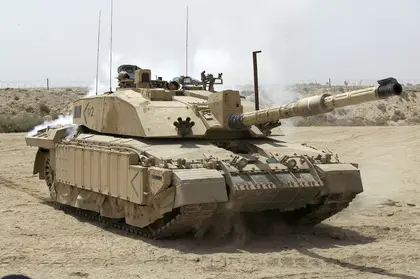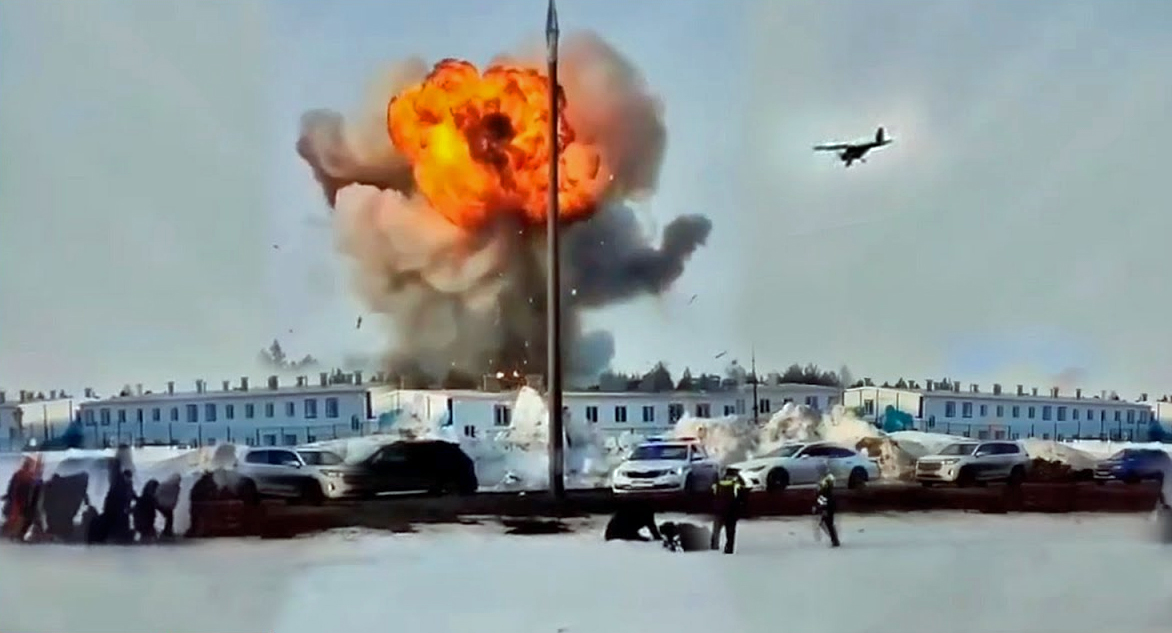The latest entrant into the long list of NATO-standard tanks Kyiv wants but probably won’t ever field – Great Britain’s powerful Challenger 2 – is not exactly an ideal tactical fit for the Armed Forces of Ukraine (AFU), but the vehicle might help pressure Berlin into coughing up Leopard 2 panzers instead.
Britain’s Sky News on Monday reported Prime Minister Rishi Sunak and his government were considering sending Ukraine 10 vehicles, a dramatic shift from previous governments, including the one led by very pro-Kyiv former Prime Minister Boris Johnson, who argued Challenger is a terrific tank, but not right for the Ukrainian military.
- Check the most up-to-date Ukraine news reports from today.
- See the most contemporary Ukraine news reports for today.
JOIN US ON TELEGRAM
Follow our coverage of the war on the @Kyivpost_official.
First produced in the 1990s and continually updated, the Challenger has operated successfully in the Middle East and Southeast Asia. It is a main battle tank designed to defeat any combat vehicle it comes up against, carrying cutting edge layered armor, modern optics and a 120mm and rifled cannon.
If delivered to Kyiv the Challenger 2 tank would become, overnight, the most advanced tank in the AFU inventory. It would also be a giant upgrade over the approximately 350 Soviet-era T-72 tanks Ukraine has received since the Russian invasion on Feb. 24 from Poland, the Czech Republic and Macedonia. But 10 tanks, even if they are Challengers, are not much in a war like the one Ukraine is fighting against Russia.
“(T)his in itself would not be a ‘game changer’ (because of the small number of Challengers Ukraine would get) but it would still be hugely significant because the move would breach a barrier that has so far prevented allies from offering up Western tanks to Ukraine for fear of being seen as overly escalatory by Russia,” the Sky News report said.

‘Baku Expects the Russian Side to Confess’ – Ukraine at War Update for Dec. 27
Some opponents to handing over Challengers to Ukraine said the British army only operates about 450 of the tanks for itself, and had none to spare. Others pointed to the probable difficulty of delivering sufficient spare parts and maintenance know-how to keep the very modern but complicated Challenger running for any length of time in battles on the Ukrainian side.
The main European alternative to the Challenger tank is Germany’s comparable Leopard 2, a high-tech, Bavaria-manufactured vehicle in the field since 1979. Munich’s Kraus Maffei Wegmann (KMW) has built a reported 3,600 Leopard 2 tanks of various models, and sold the combat vehicle not just to the Bundeswehr but across Europe (including to neutral Finland, Sweden and Switzerland), as well as further afield to Chile, Qatar, Singapore and Canada.
According to military analysts, the Leopard 2 is probably the best choice of NATO main battle tanks that could be used to equip the AFU. KMW’s Leopard 2 supply and maintenance network has long experience servicing Leopard 2 tanks all over the world. That and the fact that there are hundreds of parked vehicles which third party governments aren’t using and want to sell make the German tank the most logical option.
But German Chancellor Olaf Scholz and his center-left government have repeatedly rejected the idea of sending Ukraine Bundeswehr Leopards on grounds it might provoke Russia. The German opposition has criticized the position as enabling Kremlin aggression, but avoiding confrontation with Moscow is widely supported in Scholz’s ruling Social Democrat party (SPD).
Since Germany is the manufacturer, even Leopards in the hands of Spain or Poland – both of which, among others countries, have declared readiness to hand over their Leopards to Ukraine immediately if only Berlin will allow it – are subject to Scholz and the SPD’s approval.
Over eleven months of war, a public relations ritual has developed: Kyiv officials beg in Ukrainian media for Germany to please send Leopard tanks or Russia will defeat the Ukrainian military, followed by official German declarations to German news agencies of deep and serious German support and commitment to Ukraine, but, because Russia shouldn’t be antagonized, without Leopards.
In the run-up to local elections in Berlin, Scholz said in a Monday speech to SPD supporters that Germany could not hand over Leopard 2 tanks, or indeed any other major weapons system to Ukraine, unless Germany somehow wasn’t acting unilaterally.
"Germany will not go alone… Germany will always remain united with its friends and allies... Anything else would be irresponsible in such a dangerous situation," Scholz said, in a Jan. 9 comment reported by Reuters.
Ukrainian military-focused Telegram channels were quick to point out that, were Britain were to send Challengers to Ukraine, then the SPD and Germany would become not the first, but the second, state to send modern main battle tanks to Kyiv.
Asked whether Leopard 2 might yet be in Ukraine’s future, Germany’s Minister of Economy, Vice-Chancellor Robert Habek, in a Jan. 9 interview told the German TV channel ARD: “Of course, this cannot be ruled out." Polish Deputy Foreign Minister Paweł Jabłoński in Monday radio comments said Warsaw “encourages” other nations to consider handover of Western tanks to Ukraine. Neither he nor Habek mentioned timelines.
You can also highlight the text and press Ctrl + Enter






